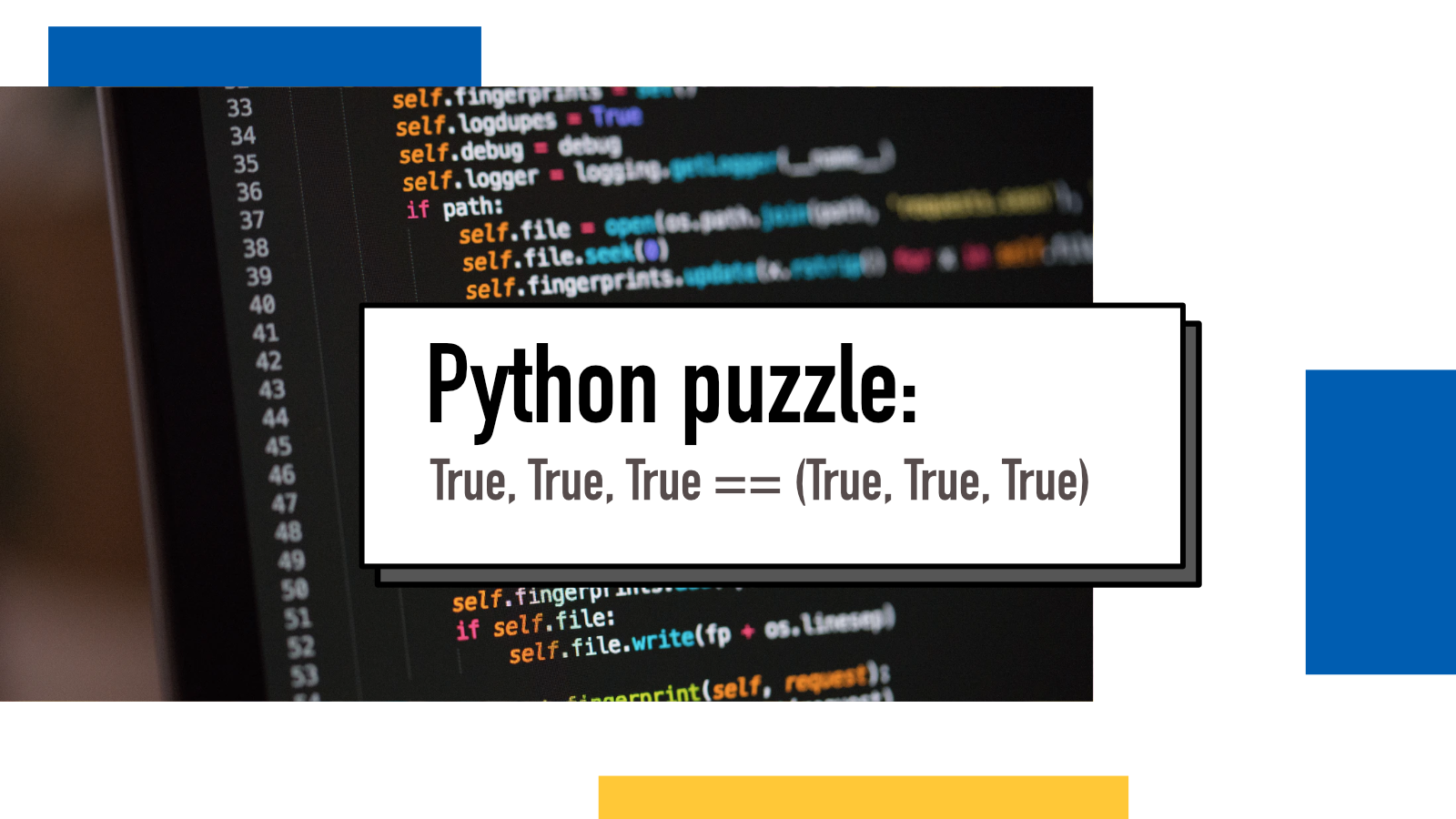True, True, True == (True, True, True) in Python

A friend shared this interesting piece of Python code in our Telegram chat today:
>>> True, True, True == (True, True, True)
(True, True, False)(If you want to figure it out yourself first, stop reading now and return once you want to learn or confirm your thoughts.)
So what's happening here? Let's first take a look at what are tuples in Python.
Tuples are immutable sequences, typically used to store collections of heterogeneous data (such as the 2-tuples produced by theenumerate()built-in). Tuples are also used for cases where an immutable sequence of homogeneous data is needed (such as allowing storage in asetordictinstance).
There are a couple of ways to create a tuple, two of which are seemingly used in this little brainteaser:
>>> True, True, True # Using commas
(True, True, True)
>>> (True, True, True) # Using parenthesis
(True, True, True)
>>> tuple(True, True, True) # Using tuple constructorSo when looking at the original piece of code, it seems that we're creating two tuples with three True in each and then comparing these items to each other. When comparing tuples, comparison is done item-by-item: first you compare items in index 0, then in index 1 and so on.
In reality, comparing two tuples however doesn't return a new tuple with the results of individual comparisons but a single boolean value True or False.
So what's actually happening when this code gets executed? To create a tuple, Python will evaluate each of its items and then store that data in a tuple.
# First Python sees there's a True
# Then there's another True with comma in between
# Then there's expression True == (True, True, True) which gets evaluated into False
# A tuple is created with values (True, True, False)
>>> True, True, True == (True, True, True)
(True, True, False)
The comparison function, the use of tuples and the use of booleans is what makes this initially weird looking. If we take a look at an example of tuple creation with other values and operators, it becomes clearer.
>>> 1, 2, 5 + 7
(1, 2, 12)
What happens here is exactly the same: each item is evaluated one by one, left to right and then stored as a tuple.
Thanks to Helio Loureiro for sharing this with me.
If something above resonated with you, let's start a discussion about it! Email me at juhamattisantala at gmail dot com and share your thoughts. In 2025, I want to have more deeper discussions with people from around the world and I'd love if you'd be part of that.